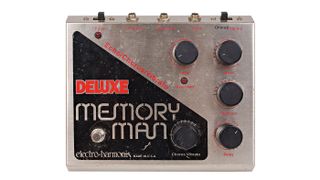Despite their gorgeous sound, early tape-based delay units were cantankerous and unstable on a good day, and a nightmare to repair if they broke down - which they did quite often.
Fortunately, by the start of the '70s, an alternative was on offer in the form of the bucket-brigade delay (BBD) circuit. Developed in 1969 by Philips Research Laboratories, the BBD shuttles a stored analogue signal through a consecutive series of capacitors - kind of like a fire brigade, hence the name.
As would be the case with digital delays, signals passed through bucket-brigade circuits suffer from aliasing and were therefore quite liberally filtered on the way in and again on the way out. The resulting sound had a definite character - one that musicians would come to both love and loathe.
One of the most famous bucket-brigade delays came courtesy of Mike Matthews and Electro-Harmonix, creator of the legendary Big Muff fuzz pedal. Dubbed the Memory Man, it was based on a low-noise analogue bucket-brigade chip from Panasonic. The Memory Man Deluxe hit the shelves in 1976, going through a number of iterations. Remarkably, you can still buy a new one today!
In 1981, Boss launched the DM-2, a compact pedal instantly recognisable for its hot red hue, that would become a ubiquitous staple in pedalboards of the 80s. Earlier units sounded darker and somewhat thicker due to the delay chip in play. Later units were cleaner with a bit more sizzle.
Pros and cons
Though many prefer the sound of tape echoes, bucket-brigade delay circuits have many benefits over their electromagnetic counterparts, not least being the physical footprint. Bucket-brigade delays are much, much smaller than tape-based units, something for which every gigging musician and tour roadie was quite thankful. Bucket-brigade delays are also capable of producing the short delays required for chorus and flanging effects. Before the BBD, flanging could only be produced using dual tape decks - not exactly a stage-friendly proposition!
Likewise, the BBD circuit could provide an acceptably convincing alternative to the rotating Leslie speaker, and more than a few touring organists dumped the heavy cabinet for pocket-sized pedals.
Like so many analogue effects, the bucket-brigade delay was eventually supplanted by digital solutions - until, of course, musicians began to miss the quirky qualities of those old circuits.
Dialling in the digits
So what about those aforementioned digital solutions? Well, Eventide Clock Works (now simply Eventide) have become a familiar and revered name in digital audio processing, and it all began with a digital delay. Built around a whopping 100 shift registers, the DDL 1745 could manage 200 milliseconds of delay – just enough to be useful in the studio. It wasn’t much for echoes, but it could act as a pre-delay for a reverb or ADT. It cost $3800 - a staggering sum in 1972!
Needless to say, the price tag kept the DDL 1745 out of the mainstream market, though the company’s popular H910 Harmonizer included a short delay line, too, and cost a paltry $1600 when it was released in 1974.
Other costly units, like the AMS DMX 15-80 (the first microprocessor-controlled delay) and Lexicon’s Prime Time Model 93, appeared at the latter end of the 70s, but the technology had begun to come down in price, and by the mid-80s, Boss were able to deliver the DD-2 stomp box for a price that gigging guitarists could actually afford (if only just). The first ever digital delay pedal, the DD-2 was a variation of the same technology used by Roland (Boss’ parent company) in their rack-mountable SDE series of delays, which were priced from £400 to £799.
Delayed gratification
Thanks to the onward march of technology, as prices came down, delay times increased. Lexicon’s PCM-42 offered 2.4 seconds of delay time, but could be expanded to achieve delays of nearly five seconds, while TC Electronic’s venerated 2290 came stocked with 4 seconds, expandable to a whopping 64 seconds - and this was as long ago as 1986!
Soon, imaginative musicians such as Robert Fripp would set about regularly using these devices as more than mere echo boxes, deploying them as digital sound-on-sound loopers.
Though the word ‘digital’ implies a certain sterility to some, these early digital delay units were overflowing with personality, due in some part to the limitations of the technology in play. It goes without saying that, like tape delay, BBDs have been reborn in virtual form.
To read the full Vintage Effects feature, buy the November 2018 edition of Computer Music.
Four superb bucket-brigade delay plugins
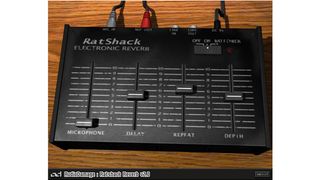
Audio Damage Ratshack Reverb
In the 80s, the Realistic Electronic Reverb was a staple for strapped musos in the US. Despite the name, it wasn’t a reverb at all, but a bucket-brigade delay unit. Audio Damage have modelled this battered black beauty in intricate detail.
Read more about Audio Damage Ratshack Reverb
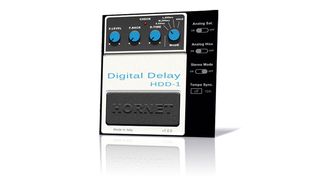
HoRNet HDD-1
This diminutive delay is a dead ringer for Boss’ DD-2, the first digital delay pedal to make it to market. HDD-1 has all of the flavour of the real thing, with dead-on modelling of the feedback behaviour, as well as the saturation and hiss from the original’s analogue bits.
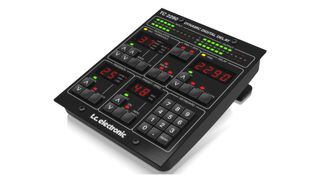
TC Electronic TC2290-DT
This plugin version of TC’s lofty, luxurious legend comes with a rather slick USB remote fashioned after the front panel of the original. Who better to recreate the sound of TC’s famous delay than TC themselves?
Read full TC Electronic TC2290-DT review
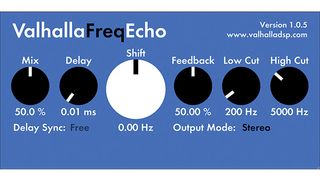
ValhallaDSP ValhallaFreqEcho
Valhalla’s first plugin, this feedback-filled freebie isn’t a clone of a specific delay, but a combo containing a Bode-style frequency shifter and an excellent analogue delay model. You can control the built-in low and high cut filters for some raunchy repeats.
